It is not the oldest surviving pub in London, but it is the most attractive and the most indicative of its period, with rambling passageways, nooks and crannies, and an atmosphere that reeks of a Dickensian world. Countless writers have sat in its corners, nursing their favourite tipple, among them Wodehouse, Yeats, Conan Doyle, Dickens and Mark Twain.

Ye Olde Cheshire Cheese London
by Maritravel
Built after the great fire of London in 1668, frequented by writers down the centuries, the pub still attracts writers and visitors from all over the world.
Ye Olde Cheshire Cheese
Ye Olde Cheshire Cheese in London’s Fleet Street is a pub to which every visitor to the city should pay at least one visit. It’s one of the oldest pubs in London, rebuilt shortly after the Great Fire of 1666, and it occupies a labyrinth of random rooms connected by crooked stairways and odd jumbled passageways.
There has been a pub at this location since 1538 and although there are several older pubs which have survived, like the Tipperary on the other side of Fleet Street which survived the fire because it was made of stone, Ye Olde Cheshire Cheese continues to attract tourists who love it for its atmosphere. It is so of another world and another century, and its literary connections make it a haven for those who have an affinity with books and their authors.
The entrance is in a narrow alley by the side of the pub and from the outside the place looks small, but this is deceptive for once inside there are numerous bars, rooms upstairs and downstairs, and great, open fireplaces in winter.
Re-built in 1668, it no longer has its original wainscoting. Some of the interior wood panelling dates from the nineteenth century, some is older, but no one is quite sure which parts are original. Upstairs, the lighting is dim, but this adds atmosphere to the place and I presume is kept deliberately so, to enhance the feeling of age, but if you’re eating there, a small torch with which to read the menu might be useful.
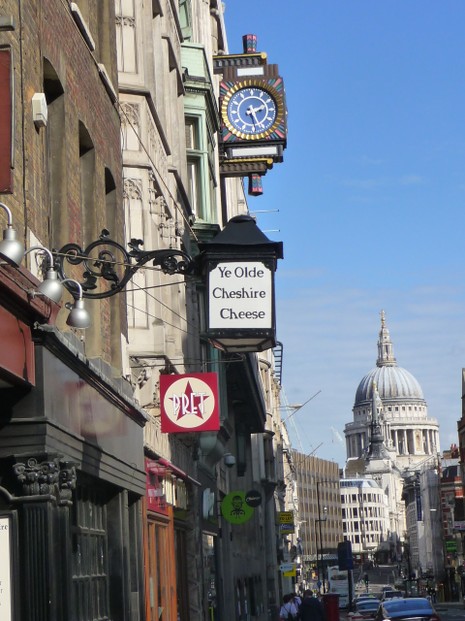 Ye Olde Cheshire Cheese sign with St. Paul's, London Mari Nicholson |
Literary Associations:
There are plaques on the wall detailing the many literary figures who patronised the pub over the centuries. Chief among these, and the most famous, is Charles Dickens who is known to have been a frequent visitor. Mark Twain, Alfred Lord Tennyson, Sir Arthur Conon Doye, P.G. Wodehouse and Dr. Johnson (who lived just down the street at 17, Gough Square), are all said to have been regular visitors.
Reference to the pub can be found in Dickens’ A Tale of Two Cities when Sidney Carton invites Charles Darnay to dine there (after his acquittal), and leads him from Fleet Street “up a covered alleyway into a tavern ….. where Charles Darnay was soon recruiting his strength with a good plain dinner and good wine”. The interior of the pub is still quite dark and it is easy to imagine it filled with a cast of characters from Dickens’ novels.
Wodehouse mentions the pub by name in some of his books, The Dynamiter (1885) being one, but the writer himself often visited the place. In one letter he wrote, "Yesterday, I looked in at the Garrick at lunchtime, took one glance of loathing at the mob, and went off to lunch by myself at the Cheshire Cheese”.
Tales from Ye Olde Cheshire Cat
Polly the Parrot
For around 40 years, an African grey parrot named Polly lived on the premies. Polly was both famous and loved, so much so that on its death in 1926, it is said that around 200 newspapers across the world wrote an obituary.
A customer there, on the day I visited, assured me that this was the firs pub in London to serve whiskey, but I have yet to have this confirmed. Still, it’s a nice touch to put alongside the name Ye Olde Cheshire Cat and the other cat, Hodge, the treasured companion of Dr. Samuel Johnson, whose daily meal of oysters (then a cheap food) Johnson himself bought from the nearby fish market.
The Real Ales of Olde England
CAMRA
If you are a fan of good real ales, then Ye Olde Cheshire Cheese has an excellent list of beers to keep you happy, which you can enjoy drinking in nooks and crannies in rooms up and downstairs. Quite Dickensian, in fact. The ground floor has a restaurant, called a chophouse in deference to the period in which the pub was making history, so good food is also the order of the day.
You might also like
Traditional Cheshire FoodAlthough not as well known or as filling as Lancashire recipes, Cheshire trad...
Explore The Thames Foreshore - Find Hidden TreasureComing to London? Why not visit the Thames foreshore and discover the fragme...
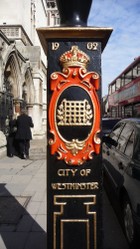

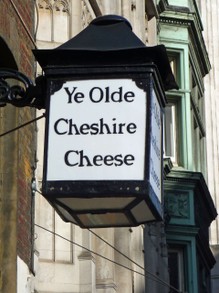
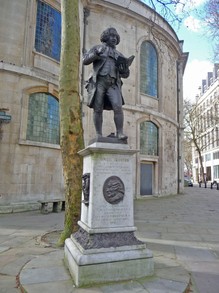
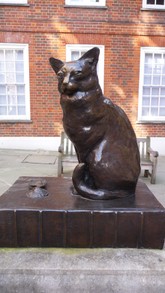
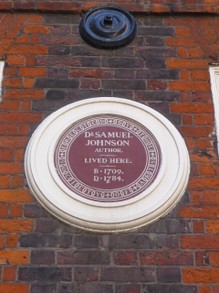
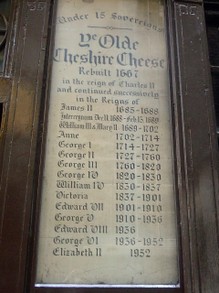
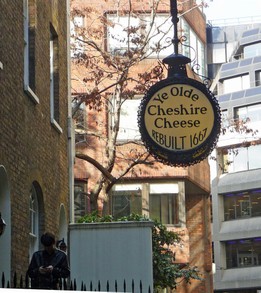

 The Alternative Picture Galleryon 04/20/2016
The Alternative Picture Galleryon 04/20/2016
 ROME - Where the Past Comes to Lifeon 03/26/2016
ROME - Where the Past Comes to Lifeon 03/26/2016
 Only in London - New Unique Guideon 01/25/2016
Only in London - New Unique Guideon 01/25/2016
 Manna, from Sicily, not from Heavenon 01/08/2016
Manna, from Sicily, not from Heavenon 01/08/2016
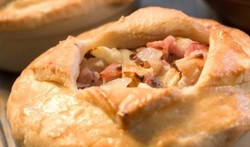

Comments
Candy,
My dear friend is over here from Philadelphia on holiday just now. She is going to London for a few days next week, She will love this.
I would love to visit the Cheshire Cheese. Living in the U.S. though I have been to the Algonquin Round Table in New York City.
My observation is that there is an implication of a date earlier than 1190 and earlier than Giraldus Cambriensis, who wrote in the prelude to the Crusades.
No. It isn't merely implied. It is a matter of record. The Countess of Cheshire made Cheshire cheeses from her own personal herd, to give to King Henry 2nd in 1190.
I don't doubt that the recipe has changed but Cheshire Cheese is recorded in 12th C .
Normally if something is recorded as a product, unless it is identified as a innovation, it has been around long enough to be noticed, so an origin long before 1190 is implied. Remember, what attracted the Normans and the Vikings to England was that it was a rich, well farmed and well run land, and so it is likely that our Anglo-Saxon forebears had developed a range of good cheeses from their profitable farms. Cheshire is good grassland and that suits cattle and sheep, and sheep were the mainstay of the English economy from Anglo-Saxon times onwards, so much cheese making in Cheshire must have happened, though I suggest that cattle and ewe's milk cheeses would have been made. The area is not right for goats, so there would have been no goat's milk cheese.
We must also remember that the West of England, in which I include Cheshire, is much more of a mixture of Saxon and Celtic tradition and ethnicity than the East of the country is. The Celtic Britons were, like their Irish relatives, pastoralists who tended to keep cattle, and cattle keeping implies milk, which implies cheese. So the Cheshire cheese recipe probably goes back a long way, though it will have been refined over the centuries.
I made a reference to Cheshire cheese in my article
https://wizzley.com/traditional-chesh...
No, 1580 is way too late. Cheshire cheese was recorded as far back as 1190 and also Giraldis Cambrensis in his 12th C writings, and also William Smith in 16th C praised the quality of Cheshire cheese.
"They [the Cheshire farmers] make great store of cheese. In praise whereof I need not to say much, seeing that it is well known that no other county in the Realm may compare therewith, nor yet beyond the Seas; no, not Holland in goodness, although in quantity it far exceeds."
It was much desired in London and London traders used to come up to Cheshire to buy quantities of it .
Maybe this is where the pub name came from.
I have just done some research. Cheshire cheese is recorded along with Shropshire cheese in a document of 1580, which means these two are probably among the oldest recorded cheeses. However, the Cistercian monks of Wensleydale in Yorkshire were making cheese in the twelfth century to their own recipe, so that makes Wensleydale the oldest recorded, though the recipe for Wensleydale changed from ewes' to cows' milk. However, William of Malmsbury in 1125 records that Cheshire was one of the great dairy regions of England, and in great dairy regions cheese is just going to happen. As Cheshire was by then a great dairy area the cheese recipe must be older than 1125. So there are three in a race to be the oldest. However,the Cheshire folk were there before the monks were in Wensleydale,so my bet goes to Cheshire, with its southern neighbor Shropshire in hot competition.
As ever, I long to rush to London and immerse myself in the places you write about. Such interesting information about this wonderful old pub.
As a point of information, ye was pronounced the.